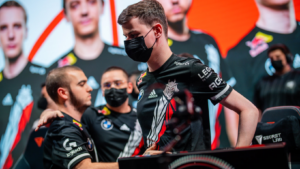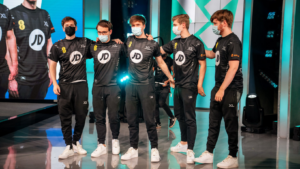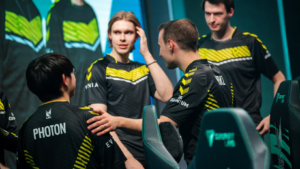In the electrifying world of eSports, ‘League of Legends’ stands as a titan, captivating millions of fans across the globe. This multiplayer online battle arena game has evolved into a competitive battleground, where teams clash in the pursuit of glory.
These teams aren’t just a group of gamers; they’re professionals, rigorously trained, and strategically sharp. They’ve transformed their passion into a career, demonstrating skill levels that are nothing short of awe-inspiring.
This article delves into the fascinating universe of League of Legends eSports teams. It’s an exploration of their journey, their strategies, and the sheer dedication that propels them to the top of the leaderboard. Buckle up, for we’re about to embark on a thrilling ride into the heart of League of Legends eSports.
League of Legends Esports Teams
 Comprehending the structure and history of League of Legends eSports teams provides a richer context in appreciating their skill, dedication, and competitive edge. Let’s delve deeper into their fascinating timeline and team organization below.
Comprehending the structure and history of League of Legends eSports teams provides a richer context in appreciating their skill, dedication, and competitive edge. Let’s delve deeper into their fascinating timeline and team organization below.
A traditional League of Legends eSports team consists of five players: a Top Laner, a Mid Laner, a Jungler, and two Bottom Laners (an AD Carry and a Support). Each role dictates the playstyle, characters, and responsibilities on the virtual battlefield. Nonetheless, a team’s success isn’t solely attributable to the on-field players. Key support staff, including coaches, analysts, and managers, contribute to overall strategy, player development, and day-to-day logistics.
League of Legends Esport Team Strategies and Tactics
 Buoyed by rigid training regimes and meticulous strategies, League of Legends esports teams, such as TSM and Cloud9, manage to consistently stay at the top of their game. The magic lies hidden in their distinctive tactics and evolving strategies which continue to set them apart.
Buoyed by rigid training regimes and meticulous strategies, League of Legends esports teams, such as TSM and Cloud9, manage to consistently stay at the top of their game. The magic lies hidden in their distinctive tactics and evolving strategies which continue to set them apart.
The tactics employed by top-tier LoL esports teams vary immensely, exhibit uniqueness, and are often tailored towards the strengths of the squad. Among the most employed tactics is the ‘vision control’. This tactic revolves around teams diligently managing wards, a type of purchase that reveals part of the game map, to inhibit the opponent’s play while amplifying their own strategic positions.
Another prevalent tactic, the ‘objective control’, focuses on maximizing team effort towards obtaining game objectives while ensuring minimum losses. Providing examples, both TSM and Cloud9 have shown tactical expertise in handling game objectives like Dragon and Baron Nashor, resulting in notable victories.
Demystifying the Role of Coaches in League of Legends Esports Teams
 In the heart-pounding realm of League of Legends esports, behind each click and decision, stands a coach. Navigating Team SoloMid (TSM) and Cloud9’s success are their coaches, guiding strategies and supporting players in a constantly evolving competitive environment.
In the heart-pounding realm of League of Legends esports, behind each click and decision, stands a coach. Navigating Team SoloMid (TSM) and Cloud9’s success are their coaches, guiding strategies and supporting players in a constantly evolving competitive environment.
Coaches play a crucial role in these esports teams. Their tasks include formulating game strategies, analyzing opponents, overseeing team practices, and ensuring optimal player performance. For instance, at the helm of TSM’s numerous wins stands their coach, executing strategies that complement their players’ strengths and exploit opponents’ weaknesses. A coach’s proactive approach can enhance a team’s performance drastically, transforming raw skill into a disciplined, winning formula.
Global Influence and Impact of League of Legends Esports Teams
League of Legends Esports teams command substantial global influence, permeating diverse facets of culture and economy. The interconnected nature of esports furthers the reach of this booming infrastructure, with League of Legends teams at the forefront.
With the worldwide proliferation of esports, League of Legends teams have left a significant imprint on global culture. Popular teams, such as TSM and Cloud9, made their mark on cultural trends by integrating esports into mainstream cultural dialogue. Their influence stretches across diverse aspects, veering from merchandise to media engagement. Custom jerseys, memorabilia, fan art, and esports-themed TV shows mark this cultural shift. Match viewings, even, have evolved into social engagements, akin to traditional sports, broadcasting millions of viewers, underscoring the high degree of cultural assimilation.

